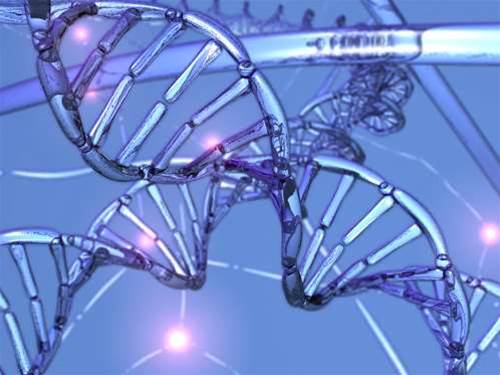Scientists at IBM Research and the California Institute of Technology (Caltech) have found a way of using DNA structures to build smaller, faster and more power-efficient computer chips.
Current processors are being built using 32nm technology, but the researchers are looking into how to solve some of the problems associated with taking this below 22nm, as well as exploring new classes of transistors that employ carbon nanotubes or silicon nanowires.
The breakthrough, announced in Placement and orientation of DNA nanostructures on lithographically patterned surfaces, combines lithographic patterning with self-assembly to create a way of using DNA origami structures as 'scaffolding'. This should allow them to be used on surfaces compatible with today's semiconductor manufacturing equipment.
"The cost involved in shrinking features to improve performance is a limiting factor in keeping pace with Moore's Law, and a concern across the semiconductor industry," said Spike Narayan, manager of science and technology at IBM's Almaden Research Center.
"The combination of this directed self-assembly with today's fabrication technology eventually could lead to substantial savings in the most expensive and challenging part of the chip-making process."
The new approach effectively allows designers to use the DNA molecules as miniature circuit boards for the precise assembly of components at dimensions significantly smaller than is possible with conventional semiconductor fabrication techniques.
This would not only allow manufacturers to make smaller chips that are faster and more powerful than those available today, but to make them significantly more energy-efficient and less expensive to manufacture.
The basic technique behind preparing DNA origami was developed at Caltech and is performed by causing single DNA molecules to self-assemble in solution via a react ion between a long single strand of viral DNA and a mixture of different short synthetic oligonucleotide strands.
According to the researchers, this method allows them to effectively fold the DNA into nanostructures such as squares, triangles and stars with dimensions of 100nm to 150nm on an edge and a thickness of the width of the DNA double helix, allowing each point to act as attachment sites for nanoscale components.





_(20).jpg&h=140&w=231&c=1&s=0)



_(26).jpg&w=100&c=1&s=0)

 iTnews Executive Retreat - Security Leaders Edition
iTnews Executive Retreat - Security Leaders Edition










_(1).jpg&h=140&w=231&c=1&s=0)



